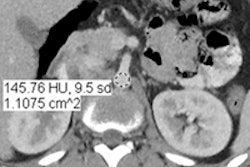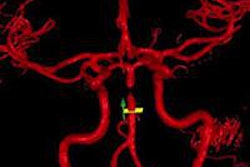Dear Advanced Visualization Insider,
How bright is too bright of an environment when using mobile devices for viewing medical images? Not as bright as you might think.
Researchers from the U.S. Food and Drug Administration (FDA) recently took a closer look at the effects of ambient lighting on the image quality of mobile devices. They concluded that it might not be suitable for radiologists to read images in ambient lighting with illumination of more than 1,000 lux. That's a level of lighting encountered outdoors or anywhere beyond standard office conditions.
What else did they find? Learn more in this edition's Insider Exclusive, which you can access before our other AuntMinnie.com members.
Mobile devices have also figured prominently in other recent news, such as the FDA's final guidance on mobile medical applications. Nearly two years after the draft guidance was initially published, the FDA's final guidance should provide a path forward for developers in determining how to secure regulatory clearance for their products. Click here and here for our extended coverage, including details on how the FDA will treat apps designed for referring physicians to review images.
In addition, a group from the Mayo Clinic found that a mobile image viewer could provide clinicians with much faster access to images, without any trade-offs in diagnostic confidence or ease of use compared to traditional desktop-based software. Get the details here.
Also, a team from Tufts Medical Center found that furnishing radiology residents with iPads yielded multiple benefits. Find out what they were by clicking here.
In other Advanced Visualization Digital Community news, researchers from the National University of Singapore and Weill Cornell Medical Center have developed an open-source 3D visualization and reporting tool that can produce 3D visual summaries of imaging studies based on radiological annotations.
And an advanced visualization technique that automatically subtracts bone data from 320-detector-row CT angiography scans can substitute for 3D digital subtraction angiography in detecting cerebral aneurysms. Learn more here.
Finally, a semiautomated lesion management application within PACS was found to provide reliable and fast segmentation of metastatic lesions in serial CT exams.
Do you have any interesting images or clips that might be suitable for our AV Gallery? You are welcome to submit them here.




















